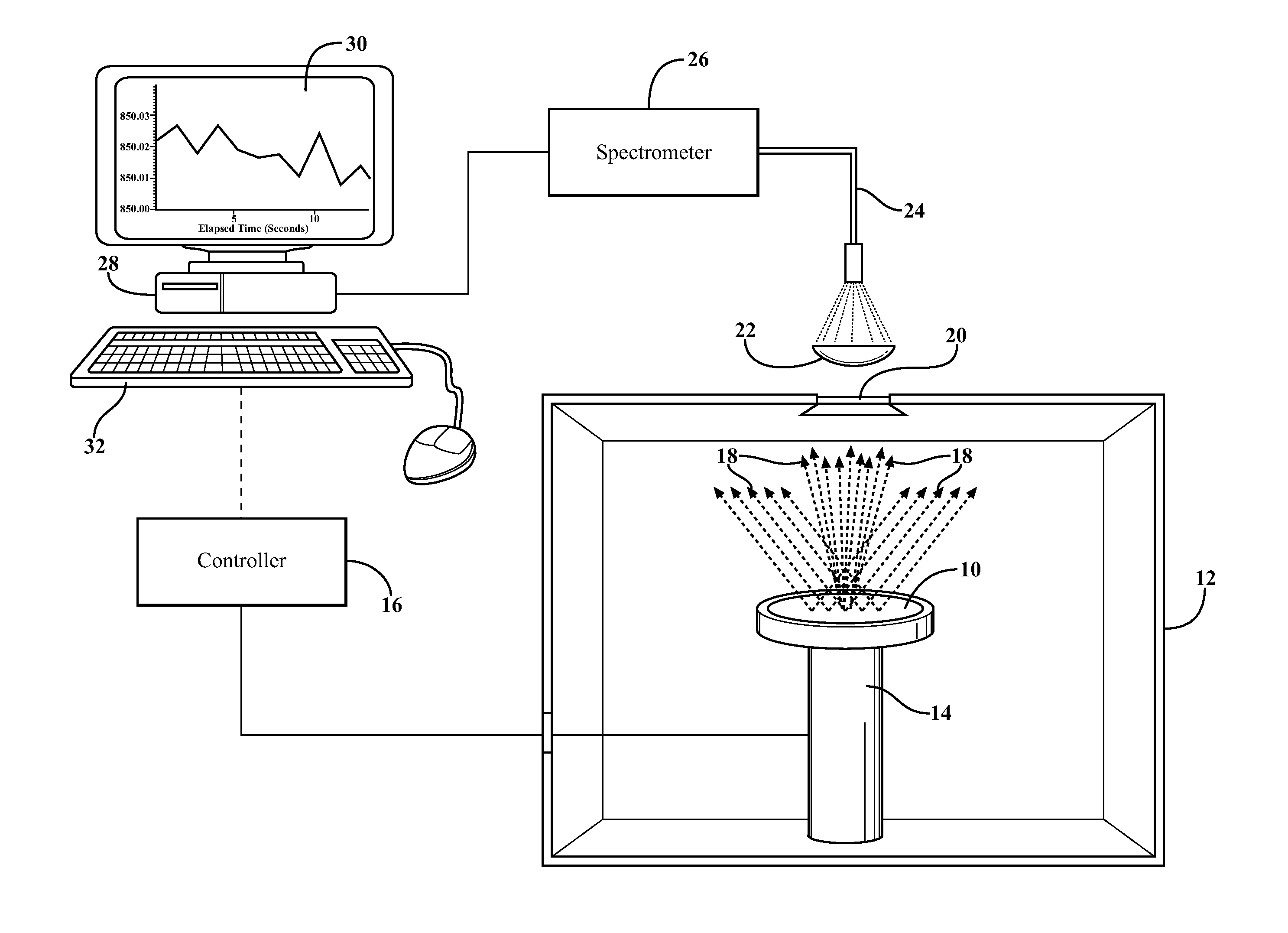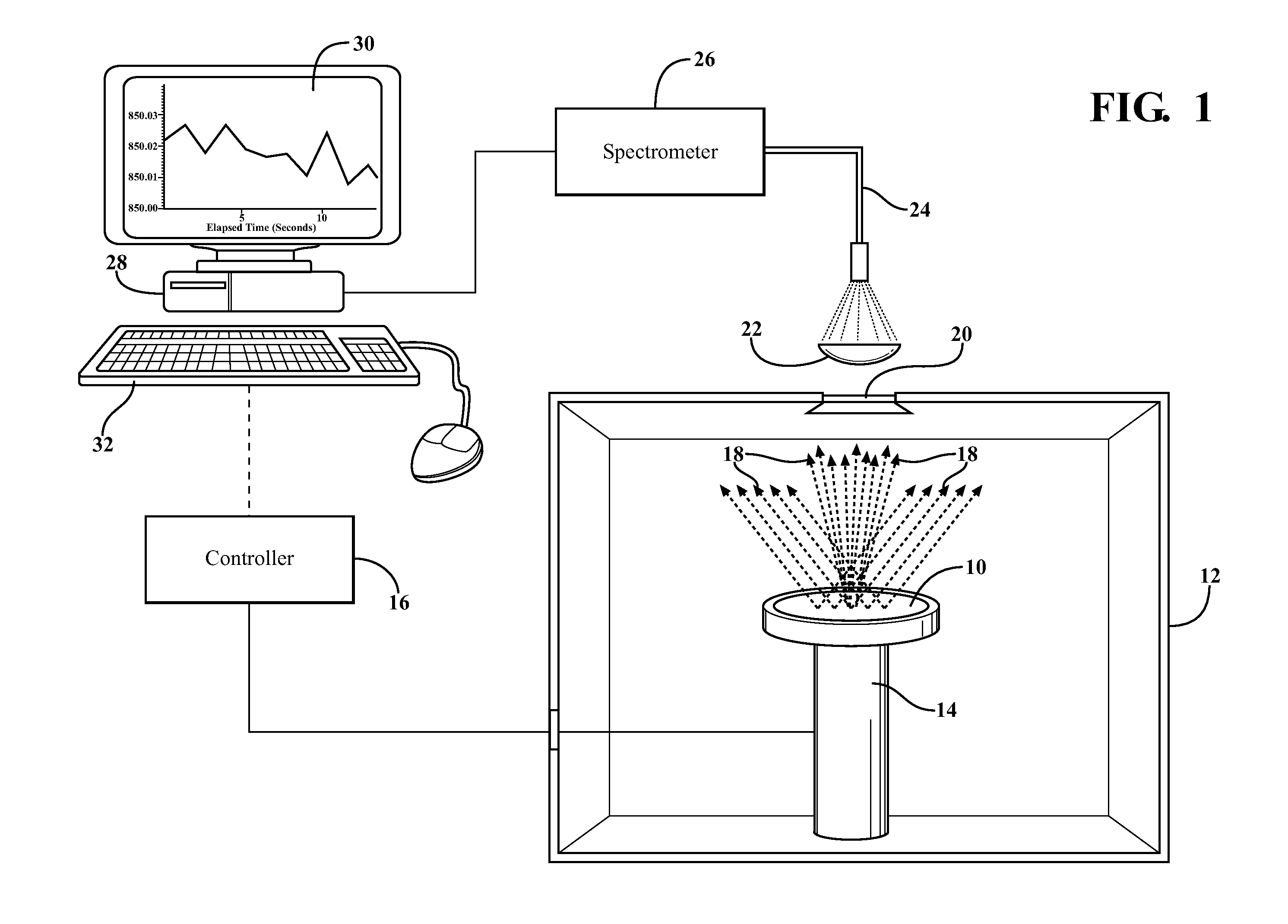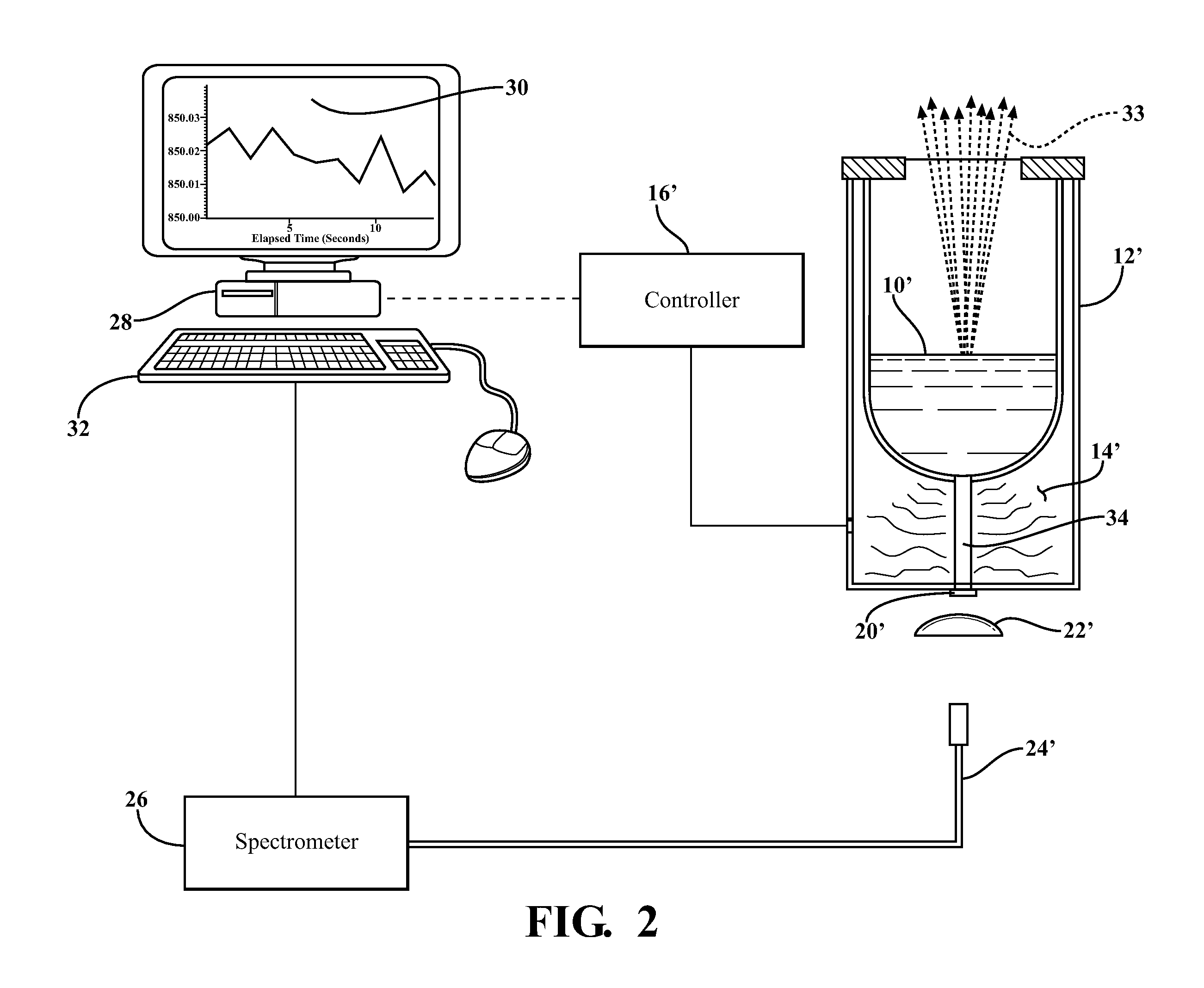Blackbody fitting for temperature determination
a technology of blackbody and temperature, applied in the direction of optical radiation measurement, instruments, spectrometry/spectrophotometry/monochromators, etc., can solve the problems of inability to use contact-based thermometry in these situations, and inability to meet the requirements of high-tech manufacturing processes. achieve the effect of simple, straightforward and robust self-calibration techniques
- Summary
- Abstract
- Description
- Claims
- Application Information
AI Technical Summary
Benefits of technology
Problems solved by technology
Method used
Image
Examples
Embodiment Construction
[0038]Referring to the figures wherein like numerals indicate like or corresponding parts throughout the several views, an exemplary application of the subject invention is illustrated schematically in FIG. 1 within the context of a thin film deposition process. In this case, the sample 10 may comprise a thin film substrate or wafer of the type used to manufacture semiconductors. The sample 10 is located within a deposition chamber 12. The sample 10 is associated with a heater 14 capable of being switched on and off by a controller 16 so as to elevate the sample 10 to an appropriate processing temperature and then maintain the sample 10 at a desired temperature throughout the deposition process. The heated wafer sample 10 emits radiation depicted by broken arrows 18 which passes through a viewport window 20 to a lens 22. The lens 22 directs the emitted radiation 18 to an optical fiber 24 which is operatively associated with a solid state spectrometer 26. The spectrometer 26 is used ...
PUM
| Property | Measurement | Unit |
|---|---|---|
| wavelength range | aaaaa | aaaaa |
| wavelengths | aaaaa | aaaaa |
| wavelengths | aaaaa | aaaaa |
Abstract
Description
Claims
Application Information
 Login to View More
Login to View More - R&D
- Intellectual Property
- Life Sciences
- Materials
- Tech Scout
- Unparalleled Data Quality
- Higher Quality Content
- 60% Fewer Hallucinations
Browse by: Latest US Patents, China's latest patents, Technical Efficacy Thesaurus, Application Domain, Technology Topic, Popular Technical Reports.
© 2025 PatSnap. All rights reserved.Legal|Privacy policy|Modern Slavery Act Transparency Statement|Sitemap|About US| Contact US: help@patsnap.com



